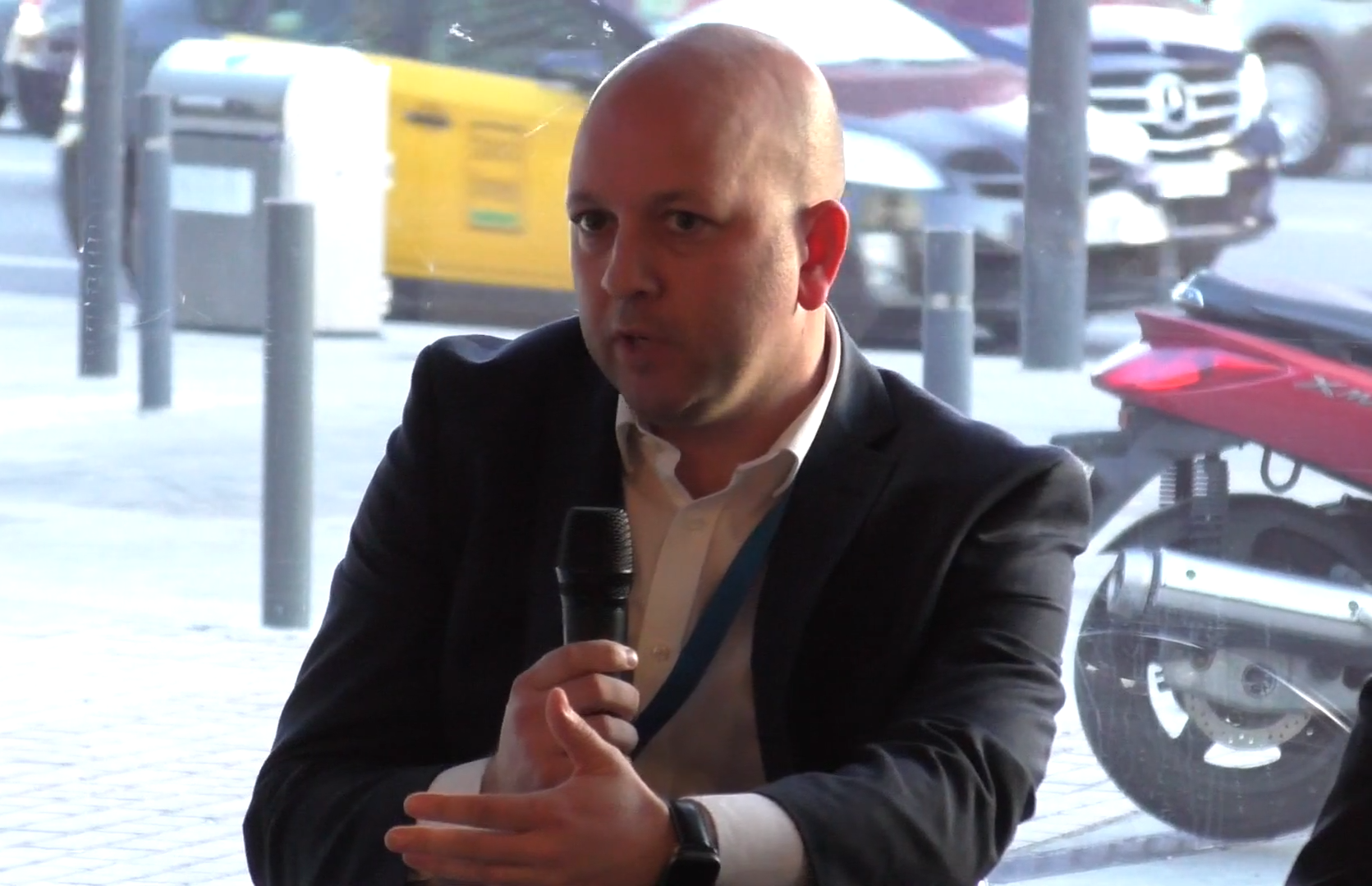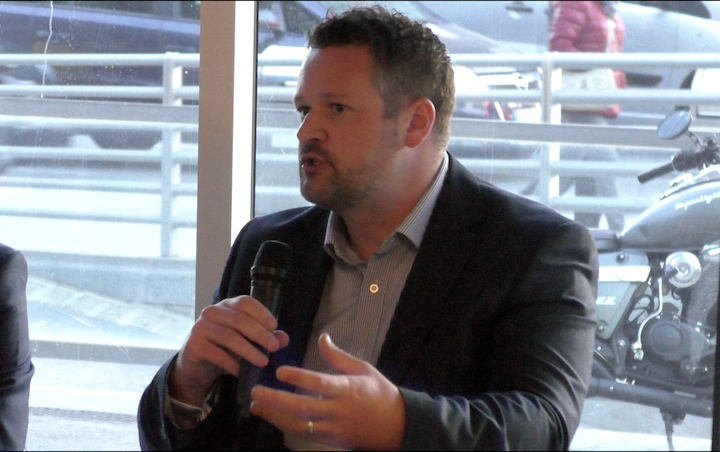The mobile industry is on the threshold of a new era. In a few years, it could put SIMs in billions of machines. Can it rise to the challenge of securing these devices? And devising suitable new commercial models? At MWC19, MEF and Cellusys gathered a panel to discuss.
It’s been said many times before. Mobile World Congress is no longer about phones.
Mobile handsets are just not that interesting any more. What’s more, the smartphone market might well be vast and vibrant, but it has flatlined. Now, the attention has switched to ‘things’.
It’s why the Fira was full of drones, cars and even (plastic) cows.
Watch highlights from the Cellular IoT panel from MWC 2019
So what exactly is the mobile Internet of Things? How is it different from any other IoT? Let’s go back to the beginning.
First there was mobile connectivity: GPRS, 3G, 4G etc. These network standards were designed for handsets that moved around with their owners. Every year, phones got more power hungry. But that was OK. People got used to plugging them in every night.
In time, other devices got connected. Non-phones. Some were ‘dumb’ and static such as alarms and meters. Others moved around (cars). But none had individual human owners.
So the technical specs and commercial models assigned to these things were different.
You can’t expect ‘things’ to house big and expensive batteries. You can’t charge them every day. You can’t necessarily upgrade their firmware regularly. You might not even know where they are going to be located when you connect them.
For this reason, things used new connection technologies that were good at transmitting small amounts of information while consuming negligible power: SigFox, LoRa, Weightless etc.
However, the mobile industry was never going to sit back and let this internet of things revolution pass it by. It knew this was a huge opportunity – and that future generations of things would require the kind of long range connectivity only it could provide.
So it created a number of IoT options based on existing network protocols. They are:
Cat-1 – Based on LTE, and best suited for IoT applications that require a browser interface or voice.
Cat-0 – A version of Cat-1 that eliminates some features to make it better suited for low data rate devices.
Cat-M – The second generation Cat-0, compatible with existing LTE networks.
NB-IoT/Cat-M2 – NB-IoT is also for low data rate devices, but it doesn’t operate in the LTE band.
EC-GSM – EC-GSM can be deployed in existing GSM networks.
5G – Obviously, it’s not here yet. But the promise of 5G is its ability to support high-bandwidth applications in remote locations. So, while 5G is not necessary needed for sensors, for example, it will be essential for autonomous vehicles and other ‘things’ that require real-time machine learning analysis.
Whatever the tech, mobile IoT is a huge market opportunity. The GSMA says 36 mobile operators in 33 countries have already launched cellular IoT services in some form. Meanwhile, Ericsson projects 4.1 billion cellular IoT connections by 2024.
However, the mobile IoT also raises a lot of questions.
At MWC19, MEF convened a panel of experts to consider them. The ‘Mobile IoT, The New Opportunity’ session was hosted and supported by Cellusys.
The speakers were:
- Benedict Bannister – Tata Communications
- Dhiraj Wazir – ROCCO Strategy
- Stephen Fitzpatrick – Cellusys IoT
- Thomas Noel – JT International
Here are the keys takeaways:
Cellular is the only realistic choice for a ‘mobile’ IoT
Benedict Bannister said: ”You can’t build out a LoRa network that covers a whole country.
“Cellular is the only option if you want to connect anything that moves from cell to cell pretty much anywhere in the world. Also, from 2G to 5G, cellular is a continuum so you don’t have the fragmentation you have in other connection types.”
Security is nowhere near being solved
Dhiraj Wazir said: “We did research, and of 89 operators that featured, 42 per cent said they had no expertise in IoT security…When you have an IoT device that supports only 100 bits second, you can’t regularly update firmware because the device is not capable of it. So you need to plan, and look at each case on its own.
“A shipping container, for example, will have very different security threats to a road sensor measuring pollution. Hackers might try to spoof the location of a container because they want to steal it. But a sensor? Hardly anyone would want to hack it, except maybe a competitor.
Multi year IoT contracts will demand new commercial models
Thomas Noel said: “If a customer wants to buy 10 years of data it’s a challenge for operators on the commercial models we have at then moment, with roaming agreements that last two years for example. How can you guarantee that? 10 years is a long time to lock a customer in.
“If the IoT is going to accelerate as we hope, we have to create an ecosystem with partners all over the world, and demystify the jargon. We need to give customers a single pane of glass so they can see where their devices are in the world.”
Some things will house multiple connections, which is a challenge…
Stephen Fitzpatrick said: “We are already seeing more than one SIM in cars, for example. There will be different connections for telematics, entertainment, safety and firmware updates. Manufacturers will want to keep things separate – with multiple antennas and contact points – and that will become much harder to do.”
…5G could tackle this
Dhiraj Wazir said: “Ideally a service provider would offer different IoT networks and technologies for different use cases. But that’s not feasible. With 5G you can have technology that’s agnostic. It can do whatever you throw at it. You can have network slices for high bandwidth and low, and pay for what you use.”
The mobile IoT is a big opportunity for aggregators
Benedict Bannister said: ”Most customers know what they want to deploy. Large companies have five to 10 year roadmaps anyway, and take a long view. We have a usage based model, and we expect the data consumption to go through the roof in some cases like cars.
“Connectivity can be hard to maintain when you are moving across borders. Obviously we can manage aggregation across up to 600 MNOs. It’s a constant process. But we are neutral, which clearly operators themselves are not.”
MEF webinar: Mobile IoT – Security and Roaming
April 23rd 16:00 (BST)
Sign up now to hear an expert panel discuss how the burgeoning Mobile IoT Industry can ensure continued growth through robust security and facilitating mobility. Join industry experts from Cellusys IoT, JT Group and MEF as they explore the future of mobile IoT.
Register now










